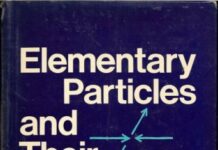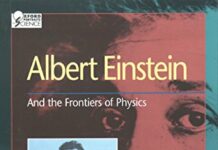
Ebook Info
- Published: 2010
- Number of pages: 316 pages
- Format: PDF
- File Size: 13.18 MB
- Authors: Jeremy Bernstein
Description
Nuclear Weapons is a history of nuclear weapons. From their initial theoretical development at the start of the twentieth century to the recent tests in North Korea, the author seeks to, at each point in the narrative, describe the basic science of nuclear weaponry. At the same time, he offers accounts and anecdotes of the personalities involved, many of whom he has known firsthand. Dr. Bernstein writes in response to what he sees as a widespread misunderstanding throughout the media of the basic workings and potential impact of nuclear weaponry.
User’s Reviews
Editorial Reviews: Review “There’s no better person to analyze this crucial and fascinating topic. Jeremy Bernstein is a delightful writer and accomplished physicist who worked at Los Alamos as a young scholar and has since written on such subjects as Hitler’s nuclear scientists, Einstein, and plutonium. He combines colorful personal tales with wonderfully clear explanations. He’s the teacher we all wish we had.” -Walter Isaacson, President of the Aspen Institute and author of Einstein: His Life and Universe (2007)”Jeremy Bernstein’s Nuclear Weapons: What You Need to Know is an important addition to the scientific literature.” -David Hafemeister, Physics Today”…an important addition to the scientic literature.” -David Hafemeister, Physics Today”Jeremy Bernstein’s Nuclear Weapons: What You Need to Know delivers as advertised, arming the reader with sufficent historical and technical background to engage contemporary journalism on nuclear weapons or to begin more in-depth study of the histories of science, the Cold War, and related topics.” -Edward H. Jeter, World History Bulletin Book Description Nuclear Weapons is designed to give a layperson an understanding of both the history and technology of nuclear weapons. About the Author Jeremy Bernstein is Professor Emeritus of Physics at the Stevens Institute of Technology in Hoboken, New Jersey. He was a staff writer for the New Yorker from 1961 to 1995. He has written some fifty technical papers, three monographs, and twelve books, including Albert Einstein, which was nominated for a National Book Award; Hitler’s Uranium Club; a biography of Robert Oppenheimer entitled Oppenheimer: Portrait of an Enigma; and most recently Plutonium: A History of the World’s Most Dangerous Element. Read more
Reviews from Amazon users which were colected at the time this book was published on the website:
⭐NUCLEAR WEAPONS: What You Need To Know, is a very well written account of the people and the physics that went into creating the world’s weapons of mass destruction. Any one teaching about this topic will surely wish to consider this as a textbook or reference. The book makes a nice complement to the video THE DAY AFTER TRINITY in which one “meets” many of the characters in Bernstein’s book. The Day After TrinityA 2007 book, it makes reference to many contemporary problems, Iran, Iraq, a terrorist bomb, DPRK, and proliferation. It includes suggestions for further reading should one find something missing, or wish to pursue the topic in more depth.The one element I found missing in detail, since this is “What You Need To Know,” is what happens to people when such a device explodes overhead or otherwise nearby. Bernstein does state numbers for deaths in Hiroshima and Nagasaki. He gives, 90,000 and 74,000. I believe Carey Sublette provides similar numbers. The question becomes, “In what year do you stop counting?” For many decades now the “official” figure that comes from reliable sources in Hiroshima is that by Dec. 31, 1945, the death toll was 140,000, with 10% possible error. Sadako Sasaki died 10 years later as did many others between 1945 and 1955. In general, not criticizing Bernstein or Sublette, when an enemy of ours kills, we use death figures from the victims; when WE kill we use OUR figures. When the 90,000 figure is used for nuclear deaths, I wonder if someone is trying to make it seem no worse than the Tokyo air raids. The United States government has never published a full and detailed account of what happened to the people of Hiroshima and Nagasaki, and still remains with the few survivors to this day, some 63 years after.I would add to the Further Reading Suggestions, Naomi Shohno’s THE LEGACY OF HIROSHIMA, Legacy of Hiroshima: Its Past, Our Future, James C. Warf’s ALL THINGS NUCLEAR, All Things Nuclear, and DAYS TO REMEMBER from the Hiroshima Nagasaki Publishing Committee, Days to Remember: An Account of the Bombings of Hiroshima and Nagasaki.NUCLEAR WEAPONS: What You Need To Know, is an excellent book. It has my highest recommendation. Give it 10 STARS!
⭐Provides colorful and detailed account of the development and basic functioning of nuclear weapons as seen through the eyes of a physicist-turned-writer whose career in physics started just after the basic engineering challenges of nuclear weapons were mostly solved. Written with clarity, thus fun and easy to read. Nicely puts into perspective the initial discovery of nuclear fission. Good coverage of the Manhattan Project of the political intricacies that led to the development of the “super”(hydrogen booster) bomb.
⭐Jeremy Bernstein has been studying, researching and writing about the science, the people and the history of nuclear weapons for years. He builds the stories into a concise, readable and understandable book that is well worth the hours of reading and thinking about the power, the dangers and the politics of an important force in our world.
⭐This a very informative history with a bit of technology ending with issues of nuclear security. development program at Los Alamos led by General Grove, with technical direction by Robert Oppenheimer. There is impressive detail on contributions by Fermi, Szilard, Teller and many more. A few relevant chemical reactions are the only technical help offered besides the text. There are sketches of the gun design used with ‘Little Boy,’ the Hiroshima bomb, and of ‘Fat Man,’ the plutonium bomb used at Nagasaki, with critical mass created by implosion. Bernstein bases a low level tutorial on lectures from a primer written by physicist Robert Serber for use at Los Alamos.There is very interesting history and speculation on the German program to develop nuclear capacity. Some moral justification for US development was fear that Germany would attain the bomb first. There is just a bit on fusion and the H-bomb. Russia attained nuclear capability through the enterprise of spies, particularly Klaus Fuchs.International nuclear proliferation is exemplified by the career of Pakistani nuclear physicist, A.Q. Khan, who stole Dutch technology for Pakistan, traded materials for technology with North Korea and is the most likely source of Iranian nuclear capability. Possibility of a terrorism bomb is limited by size and amount of testing required. There is small comfort from remembering that ‘Little Boy’ was never tested.
Keywords
Free Download Nuclear Weapons: What You Need to Know in PDF format
Nuclear Weapons: What You Need to Know PDF Free Download
Download Nuclear Weapons: What You Need to Know 2010 PDF Free
Nuclear Weapons: What You Need to Know 2010 PDF Free Download
Download Nuclear Weapons: What You Need to Know PDF
Free Download Ebook Nuclear Weapons: What You Need to Know


